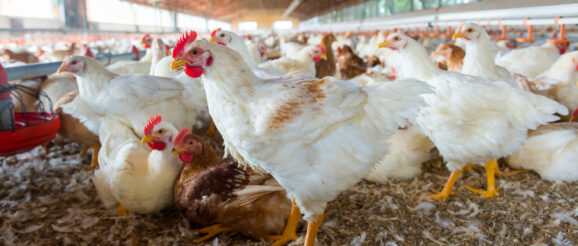Labor Shortage Drives Innovation in Poultry Industry | Arkansas Business News | ArkansasBusiness.com

Since Dana Deree founded Arkansas Global Connect, the number of Hondurans he’s been bringing to Arkansas to work in the poultry industry has continued to increase.
“There is a tremendous need across sectors of the economy for reliable, seasonal labor,” said Deree, who founded Arkansas Global Connect of Conway about two years ago. “The poultry industry fits in with that general trend.”
Last year, Arkansas Global Connect procured 200 temporary work visas for Hondurans to work in chicken processing plants here. This year, Deree projects double, even triple, that number to arrive.
Arkansas Global Connect is providing one stopgap solution for chicken producers. But researchers and industry insiders say persistent labor shortages, exacerbated by the COVID-19 pandemic, are forcing the poultry industry to innovate — fast.
“The pandemic and the economic situation we find ourselves in now has sped [up the development of technology] tenfold,” Marvin Childers, president of the Poultry Federation in Little Rock, said. “We know to be efficient and to minimize expenses, we have got to be using the latest in technology.”
In what has been described in academic animal science journals as a coming “paradigm shift,” researchers are exploring new technologies for the entire supply chain, from chicken houses to processing plants to packaging before products are shipped to grocery stores.
One innovation includes the Center of Scalable & Intelligent Automation in Poultry Processing, based at the University of Arkansas at Fayetteville, which has one of about a dozen poultry science departments in the country.
In March, the U.S. Department of Agriculture awarded the UA System Division of Agriculture, along with four other universities, $5 million to establish the center.
The researchers are exploring how robotics, machine learning and virtual reality could create a deboning process that doesn’t require human hands.

Deboning is tedious, repetitive and sometimes dangerous. Those positions are the hardest to fill and have some of the highest turnover, Jeyam Subbiah, project director for the USDA grant and UA professor of food safety engineering, said. There have been efforts to mechanize the task, but so far, machines are not as precise as humans, often leaving meat on carcasses, which could result in millions in losses for chicken producers.
“How do we make robots more intelligent so that they can customize the cut for each bird?” Subbiah said. “It’s an ambitious job. If we can get closer to human accuracy, we will be happy.”
The teams are exploring models in which the robotics would be controlled remotely by workers using virtual reality technology to train the machines how to precisely debone a chicken. Subbiah sees a gig economy model in which an employee could choose flexible shifts, like an Uber driver, and work from home.
The virtual reality technology would allow a worker to see and feel what the robot is doing and guide it to do its job with more precision. Over time, AI would allow the robot to learn to do more of the work without human involvement.
“We want to see how we can use human intelligence as much as possible,” Subbiah, also head of the Department of Food Science, said. “Whereas the hard work is done by the robots, and it’s a safe environment.”
While it might be a few years before the new deboning technology can be commercialized, Subbiah and other researchers are also testing applications for more immediate use. That includes mobile robots with bio-sensing, rapid screening technology to improve food safety inside processing facilities.
The U.S. Centers for Disease Control & Prevention estimates there are 1.35 million Salmonella infections in the U.S. annually, with eggs and chickens being a large source. Researchers are exploring hyperspectral imaging, which collects and processes information across the electromagnetic spectrum, to detect plastic contaminants.
“A camera will look at chicken moving on a conveyor belt to identify foreign materials,” Subbiah said, adding that normal X-ray machines will not detect potentially tiny pieces of plastic.
“We selectively picked projects in a way where some are immediately useful to solving problems and some are more futuristic, or transformative,” Subbiah said. “We’ll present the results, and the industry can take it and run with it or they may not take it at all.”
